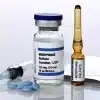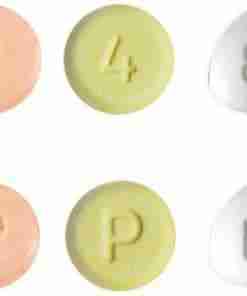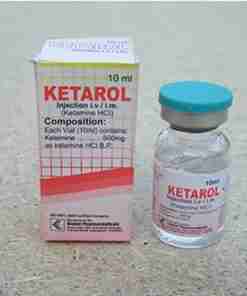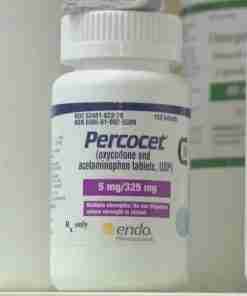Fentanyl
$100.00 – $210.00
Fentanyl belongs to a group of medications called opioids. Fentanyl is used to treat persistent chronic (long-term) severe pain for those who need constant pain relief and are currently taking other opioid (narcotic) medications.
Buy Fentanyl Online Without Prescription
Fentanyl belongs to a group of medications called opioids. Fentanyl is used to treat persistent chronic (long-term) severe pain for those who need constant pain relief and are currently taking other opioid (narcotic) medications. Buy Fentanyl Online Without Prescription.
How to Take Fentanyl
Fentanyl belongs to a group of medications called opioids. Fentanyl is used to treat persistent chronic (long-term) severe pain for those who need constant pain relief and are currently taking other opioid (narcotic) medications. It acts on the brain to increase pain tolerance.
Fentanyl (Fentanyl-transdermal) may be available under multiple brand names and/or in several different forms. Any specific brand name of Fentanyl (Fentanyl-transdermal) may not be available in all of the forms or approved for all of the conditions discussed here. As well, some forms of Co Fentanyl (Fentanyl-transdermal) may not be used for all of the conditions discussed here.
Your doctor may have suggested Fentanyl (Fentanyl-transdermal) for conditions other than those listed in these drug information articles. If you have not discussed this with your doctor or are not sure why you are using Fentanyl (Fentanyl-transdermal), speak to your doctor. Do not stop using Fentanyl (Fentanyl-transdermal) without consulting your doctor.
Do not give Fentanyl (Fentanyl-transdermal) to anyone else, even if they have the same symptoms as you do. It can be harmful for people to use Fentanyl (Fentanyl-transdermal) if their doctor has not prescribed it. Buy Fentanyl Online Without Prescription.
Fentanyl Dosage
The dose of fentanyl transdermal patch must be individualized and is based on many factors, including the dose of opioid medication that a person is currently using before starting Fentanyl (Fentanyl-transdermal).
Many things can affect the dose of a medication that a person needs, such as body weight, other medical conditions, and other medications. If your doctor has recommended a dose different from the ones listed here, do not change the way that you are using the medication without consulting your doctor.
Apply the patch to non-irritated and non-irradiated (not exposed to radiation) skin on a flat surface such as the chest, back, flank (side of the body between the upper abdomen and back), or upper arm. Hair at the application site should be clipped (not shaved) before applying a patch.
Clean the area with water only; do not use soaps, oils, lotions, alcohol, or any other agent that might irritate the skin. Using soap, alcohol, or other chemicals to clean the skin may cause the fentanyl to be absorbed faster, causing unwanted side effects. After cleaning, allow the skin to dry completely before applying the patch.
Apply the patch immediately after removing it from the protective packaging. This reduces the opportunity for someone who is not using the medication to come into contact with the patch. It is a good idea to apply the patch out of sight of children, to prevent “mimicking” behaviour.
The patch should be pressed firmly in place with the palm of the hand for 30 seconds. Make sure the contact is complete – especially around the edges. The patch should not be folded so that only part of the patch is exposed. If the patch does not stick to the skin properly, tape the edges of the patch with first-aid tape.
Each patch may be worn continuously for 72 hours. A new patch should be applied on a different skin site after removal of the previous one. This helps to prevent skin irritation, which may increase the speed that the fentanyl is absorbed through the skin. If the patch falls off before 72 hours have passed, you may apply a new patch to a new site. Wash your hands immediately with water only, after applying or removing the patch. Consult the package insert, your doctor, or your pharmacist for additional instructions on how to use the medication. Buy Fentanyl Online Without Prescription
Do not use the patch if it is cut, damaged, or altered in any way.
After 72 hours, there is still enough medication in the patch to cause serious harm to someone who is not using the fentanyl patch for pain control. Accidental exposure to the fentanyl patch may cause death or serious medical problems. When you remove the patch, fold it in half and keep it in a secure place until you can return it to your pharmacy for proper disposal.
Maximum pain relief may not occur for up to 72 hours after first starting Fentanyl (Fentanyl-transdermal). Your doctor may give you a short-acting pain control medication during this period.
Fentanyl (Fentanyl-transdermal) may be habit-forming if taken for long periods of time. Do not stop taking Fentanyl (Fentanyl-transdermal) without talking with your doctor. If Fentanyl (Fentanyl-transdermal) is stopped suddenly, you may experience withdrawal symptoms such as:
- anxiety
- Diarrhea
- hallucinations
- nausea
- shakiness
- sweating
- tremors
- trouble sleeping
- vomiting
If you plan on stopping the medication, your doctor may want you to reduce the dose gradually to reduce the severity of withdrawal effects.
Do not change the dose of the patch you are using or the way you are applying the patch without direction from your doctor. If you experience any of the following side effects of too much fentanyl in the body, seek immediate medical help:
- cold or clammy skin
- confusion
- dizziness
- feeling faint
- hallucinations
- seizure
- severe sleepiness
- slow heartbeat
- slow or shallow breathing
- trouble breathing
- unable to think, walk, or talk normally
It is important to use Fentanyl (Fentanyl-transdermal) exactly as prescribed by your doctor. If a patch is left on for more than 3 days, change the patch as soon as you remember. Do not apply 2 patches to make up for a missed one. If you are not sure what to do after missing a dose, contact your doctor or pharmacist for advice.
Store Fentanyl (Fentanyl-transdermal) at room temperature and keep it out of the reach of children.
Do not dispose of medications in wastewater (e.g. down the sink or in the toilet) or in household garbage. Ask your pharmacist how to dispose of medications that are no longer needed or have expired. Buy Fentanyl Online Without Prescription
Fentanyl Side Effects
Many medications can cause side effects. A side effect is an unwanted response to a medication when it is used in normal doses. Side effects can be mild or severe, temporary or permanent.
The side effects listed below are not experienced by everyone who takes Fentanyl (Fentanyl-transdermal). If you are concerned about side effects, discuss the risks and benefits of Fentanyl (Fentanyl-transdermal) with your doctor.
The following side effects have been reported by at least 1% of people using Fentanyl (Fentanyl-transdermal). Many of these side effects can be managed, and some may go away on their own over time.
Contact your doctor if you experience these side effects and they are severe or bothersome. Your pharmacist may be able to advise you on managing side effects.
- confusion
- Constipation
- diarrhea
- difficulty concentrating
- difficulty sleeping
- dizziness or lightheadedness
- drowsiness
- Dry Mouth
- feeling anxious
- flushing
- headache
- loss of appetite
- memory loss
- nausea
- skin itchiness or irritation at the site of application
- sweating
- vomiting
- weakness
Although most of the side effects listed below don’t happen very often, they could lead to serious problems if you do not seek medical attention.
Check with your doctor as soon as possible if any of the following side effects occur:
- bowel blockage (e.g., abdominal pain, severe constipation, nausea)
- confusion
- decreased coordination
- fainting
- hallucinations (seeing, hearing, or feeling things that are not actually there)
- fast, slow, pounding, or irregular heartbeat
- signs of Depression (e.g., poor concentration, changes in weight, changes in sleep, decreased interest in activities, thoughts of suicide)
- skin rash
- vision changes
Seek immediate medical attention if any of the following occur:
- signs of a serious allergic reaction (e.g., rash, fever, swelling, tightness in chest, shortness of breath)
- signs of a severe skin reaction (e.g., blistering, peeling, a rash covering a large area of the body, a rash that spreads quickly, or a rash combined with fever or discomfort)
- signs of breathing problems (e.g., shortness of breath, troubled breathing, wheezing, or tightness in chest, fast or irregular breathing)
- signs of getting too much medication
- cold, clammy skin
- trouble breathing
- extreme drowsiness with slowed breathing
- slow shallow breathing
- feeling faint
- dizziness
- confusion
- inability to think, talk, or walk normally
- hallucinations
- seizure
Some people may experience side effects other than those listed. Check with your doctor if you notice any symptom that worries you while you are taking Fentanyl (Fentanyl-transdermal).
Fentanyl Contraindications
Do not use Fentanyl (Fentanyl-transdermal) if you:
- are allergic to fentanyl, the adhesives used in the patch, or any ingredients of the medication
- are not already using opioid (narcotic) painkillers to manage your pain
- have acute or severe bronchial Asthma
- have acute pain or pain following surgery, including outpatient surgery
- have mild or intermittent pain that can otherwise be managed
- have or are suspected to have paralytic ileus (a condition of the intestine that does not allow material to pass through the intestine) or any other conditions that block the intestine, narrow the intestine, or slow down movement through the intestine
- have or may have “surgical abdomen” (conditions of the abdomen, such as Appendicitis, that need urgent surgery)
- have severe difficulty breathing
- have delirium tremens (e.g., confusion, diarrhea, shaking, Fever, hallucinations, disorientation) associated with alcohol withdrawal
- have acute Alcoholism
- have Epilepsy and other conditions that can cause seizures
- are taking or have taken (within the last 14 days) MAO inhibitors (e.g., Phenelzine, Tranylcypromine)
- have increased intracranial pressure (increased pressure inside the head), cerebrospinal pressure (increased pressure inside the head and spine), or head injury
- are pregnant, in labour or delivering, or breastfeeding
Fentanyl Precautions
There may be an interaction between fentanyl transdermal patch and any of the following:
- Abiraterone
- aclidinium
- alcohol
- alpha agonists (e.g., Clonidine, methyldopa)
- alpha/beta agonists (e.g., Epinephrine, norepinephrine)
- Amiodarone
- amphetamines (e.g., Dextroamphetamine, lisdexamphetamine)
- anti-Hepatitis C virus combinations ombitasvir/paritaprevir/ritonavir/dasabuvir
- antihistamines (e.g,. cetirizine, doxylamine, Diphenhydramine, Hydroxyzine, Loratadine)
- antipsychotics (e.g., Chlorpromazine, Clozapine, Haloperidol, Olanzapine, Quetiapine, Risperidone)
- antiseizure medications (e.g., Clobazam, Ethosuximide, felbamate, Levetiracetam, Phenobarbital, Phenytoin, primidone, Topiramate, Valproic acid, zonisamide)
- Aprepitant
- atropine
- azelastine
- “azole” antifungals (e.g., fluconazole, itraconazole, ketoconazole, posaconazole)
- barbiturates (e.g., butalbital, phenobarbital)
- belladonna
- benzodiazepines (e.g., Clonazepam, Diazepam, Lorazepam)
- Benztropine
- beta-adrenergic blockers (e.g., Atenolol, Propranolol, Sotalol)
- Bicalutamide
- Bosentan
- brimonidine
- Buspirone
- calcium channel blockers (e.g., Amlodipine, Diltiazem, Nifedipine, Verapamil)
- cannabis
- chloral hydrate
- Cobicistat
- conivaptan
- Cyclosporine
- Desmopressin
- Disopyramide
- diuretics (water pills; e.g., Furosemide, Hydrochlorothiazide, triamterene)
- dofetilide
- Domperidone
- Dronedarone
- Enzalutamide
- ergot-containing medications (e.g., diydroergotamine, ergonovine, ergotamine, methylergonovine)
- Flavoxate
- Gabapentin
- glycopyrrolate
- grapefruit juice
- HIV non-nucleoside reverse transcriptase inhibitors (NNRTIs; e.g., delavirdine, efavirenz, etravirine, nevirapine)
- HIV protease inhibitors (e.g., atazanavir, indinavir, ritonavir, saquinavir)
- ipratropium
- ketotifen
- lithium
- macrolide antibiotics (e.g., clarithromycin, erythromycin, telithromycin)
- mifepristone
- Mirtazapine
- monoamine oxidase inhibitors (M.O.S. e.g., Moclobemide, phenelzine, Rasagiline, Selegiline, tranylcypromine)
- Modafinil
- muscle relaxants (e.g., Cyclobenzaprine, Baclofen)
- Nabilone
- nalbuphine
- Naloxone
- Naltrexone
- nefazodone
- Octreotide
- Olopatadine
- other opioid medications (e.g., Meperidine, Morphine, Codeine, Oxycodone, Hydromorphone)
- Oxybutynin
- Pramipexole
- Pregabalin
- rifabutin
- rifampin
- Ropinirole
- Rotigotine
- St. John’s wort
- scopolamine
- seizure medications (e.g., Carbamazepine, clobazam, levetiracetam, phenobarbital, phenytoin, primidone, topiramate, valproic acid, zonisamide)
- selective serotonin reuptake inhibitors (SSRI; e.g., Fluoxetine, Paroxetine, Sertraline)
- serotonin antagonists (anti-emetic medications; e.g., Granisetron, Ondansetron)
- serotonin/norepinephrine reuptake inhibitors (SNRIs; e.g., Desvenlafaxine, Duloxetine, Venlafaxine)
- thalidomide
- tiotropium
- Tolterodine
- Trazodone
- tricyclic antidepressants (e.g., Amitriptyline, Clomipramine, Desipramine, Trimipramine)
- “triptan” migraine medications (e.g., Sumatriptan, Zolmitriptan)
- tyrosine kinase inhibitors (e.g., Crizotinib, Lapatinib, Nilotinib, Sunitinib)
- Tryptophan
- umeclidinium
- Zolpidem
- Zopiclone
If you are taking any of these medications, speak with your doctor or pharmacist. Depending on your specific circumstances, your doctor may want you to:
- stop taking one of the medications,
- change one of the medications to another,
- change how you are taking one or both of the medications, or
- leave everything as is.
An interaction between two medications does not always mean that you must stop taking one of them. Speak to your doctor about how any drug interactions are being managed or should be managed.
Medications other than those listed above may interact with Fentanyl (Fentanyl-transdermal). Tell your doctor or prescriber about all prescription, over-the-counter (non-prescription), and herbal medications you are taking. Also tell them about any supplements you take. Since caffeine, alcohol, the Nicotine from cigarettes, or street drugs can affect the action of many medications, you should let your prescriber know if you use them.
Fentanyl Warnings
Before you begin using a medication, be sure to inform your doctor of any medical conditions or Allergies you may have, any medications you are taking, whether you are pregnant or breast-feeding, and any other significant facts about your health. These factors may affect how you should use Fentanyl (Fentanyl-transdermal).
Abdominal conditions: Fentanyl may make the diagnosis of abdominal conditions more difficult or it may worsen these conditions. If you have abdominal conditions such as inflammatory or obstructive bowel disease, acute cholecystitis, or pancreatitis, discuss with your doctor how Fentanyl (Fentanyl-transdermal) may affect your medical condition, how your medical condition may affect the dosing and effectiveness of Fentanyl (Fentanyl-transdermal), and whether any special monitoring is needed.
Accidental exposure: Accidental exposure to Fentanyl (Fentanyl-transdermal) may lead to serious complications or death. Accidental exposure can occur when a patch is transferred to someone else through hugging or moving them in bed. Children are especially at risk. If this happens, immediately remove the patch from the person, wash the area with water, and seek immediate medical attention. If you are applying the patch for someone, wash your hands with water only immediately after applying or removing the patch.
After use, the patch still contains enough medication to serious harm someone who is not using fentanyl. When you remove the patch, fold it in half, so the sticky side sticks to itself. Return the used patches to your pharmacy for safe disposal. Do not discard the used patch in the household garbage.
Dependence and withdrawal: As with other opioid medications (narcotics), fentanyl may become habit-forming if taken for long periods of time. If you have a history of past or current Substance Use Problems you may be at greater risk of developing abuse or addiction while taking Fentanyl (Fentanyl-transdermal). Drug abuse is not a problem for people who require Fentanyl (Fentanyl-transdermal) for pain relief. Physical dependence (a need to take regular doses to prevent physical symptoms) has been associated with some narcotic analgesics.
Withdrawal symptoms may be experienced if the dose is significantly reduced or suddenly discontinued. Reducing the dose gradually under medical supervision can help prevent or decrease these withdrawal symptoms when Fentanyl (Fentanyl-transdermal) is no longer required for pain control.
Difficulty breathing: Fentanyl can cause serious and life-threatening breathing problems. If you experience slowed breathing or difficulty breathing, seek immediate medical attention. If you have lung problems and are taking other medications that can slow breathing, you are more at risk of experiencing these symptoms.
Make sure you follow the instructions on how to properly use Fentanyl (Fentanyl-transdermal). If you have any questions, contact your doctor or pharmacist. If you have a chronic lung condition, such as Bronchitis, emphysema, or asthma, discuss with your doctor how Fentanyl (Fentanyl-transdermal) may affect your medical condition, how your medical condition may affect the dosing and effectiveness of Fentanyl (Fentanyl-transdermal), and whether any special monitoring is needed.
Drowsiness/reduced alertness: Fentanyl (Fentanyl-transdermal) may impair the mental or physical abilities required for certain tasks, such as driving a car or operating machinery. Do not drive or operate dangerous machinery while using Fentanyl (Fentanyl-transdermal) until you have determined how Fentanyl (Fentanyl-transdermal) affects you.
Fever or heat exposure: If you develop a fever you may get higher doses than expected from the patch because the release of medication depends on heat. Tell your doctor if you develop a fever, and have a plan in place in the event that your body temperature rises.
Avoid exposing the application site to direct external heat sources, such as heating pads, electric blankets, heated water beds, heat lamps, hot water bottles, saunas, hot whirlpool spa baths, or intensive sunbathing. This exposure to heat can cause the patch to release too much medication.
Head injury: If you have head injuries or increased pressure in the head you may have a higher risk of experiencing side effects (breathing problems) or worsening of your condition while taking Fentanyl (Fentanyl-transdermal). Discuss with your doctor how Fentanyl (Fentanyl-transdermal) may affect your medical condition, how your medical condition may affect the dosing and effectiveness of Fentanyl (Fentanyl-transdermal), and whether any special monitoring is needed.
Kidney function: The kidneys are partially responsible for removing fentanyl from the body. If you have reduced kidney function you may experience increased side effects of fentanyl as a result of it not being removed as quickly as expected.
If you have Kidney Disease or reduced kidney function, discuss with your doctor how Fentanyl (Fentanyl-transdermal) may affect your medical condition, how your medical condition may affect the dosing and effectiveness of Fentanyl (Fentanyl-transdermal), and whether any special monitoring is needed.
Liver function: Fentanyl is broken down by the liver so it can be removed from the body through the kidneys. Liver disease or reduced liver function may cause a build-up of fentanyl in the body and cause side effects. If you have liver disease or decreased liver function, discuss with your doctor how Fentanyl (Fentanyl-transdermal) may affect your medical condition, how your medical condition may affect the dosing and effectiveness of Fentanyl (Fentanyl-transdermal), and whether any special monitoring is needed.
If you experience symptoms of liver problems (e.g., abdominal pain, persistent vomiting, feeling unwell, fever, itching, yellowing of the skin and eyes, dark urine), contact your doctor immediately.
Slowed heart rate: Fentanyl (Fentanyl-transdermal) can cause a serious and life-threatening reduced heart rate. If this occurs, seek immediate medical attention. If you have an irregular heartbeat and are taking other medications that can slow heart rate, you are more at risk of experiencing these symptoms.
If you have a slowed heart rate or heart rhythm problems, discuss with your doctor how Fentanyl (Fentanyl-transdermal) may affect your medical condition, how your medical condition may affect the dosing and effectiveness of Fentanyl (Fentanyl-transdermal), and whether any special monitoring is needed.
Stopping medication: Do not stop using fentanyl abruptly, since withdrawal symptoms may occur if fentanyl is stopped suddenly. These symptoms include seizures, irritability, sleep problems, agitation, tremors, diarrhea, abdominal cramps, vomiting, headache, muscle cramps, extreme anxiety, tension, restlessness, sweating, and confusion. Your doctor will advise you on how to safely stop taking fentanyl if you no longer require it for pain control.
Tolerance: Fentanyl transdermal patches may lead to tolerance when used for a long period of time. Tolerance means that your body gets used to the medication so that more medication may be needed to produce the same pain relief. Your doctor will recommend the dose of fentanyl patch that is most appropriate for you. Do not change your dose or the way you are using the medication on your own. Speak to your doctor if you have any questions.
Pregnancy: Fentanyl crosses the placental barrier and may cause harm to an unborn baby. Withdrawal symptoms have been noted in newborns of mothers who used fentanyl during pregnancy. Fentanyl (Fentanyl-transdermal) should not be used during pregnancy unless the benefits outweigh the risks. If you become pregnant while taking Fentanyl (Fentanyl-transdermal), contact your doctor immediately.
Breast-feeding: Fentanyl passes into breast milk. If you are a breast-feeding mother and are using fentanyl, it may affect your baby. Talk to your doctor about whether you should continue breast-feeding.
Children: The safety and effectiveness of using Fentanyl (Fentanyl-transdermal) have not been established for children less than 18 years of age.
Seniors: Seniors may be more sensitive to the effects of Fentanyl (Fentanyl-transdermal) and may require lower doses.
Why Buy Fentanyl Online?
There are a lot of benefits to buy Fentanyl Online and some of the most important and common advantages are:
Say Bye to Hesitation: As it is a drug, so you may hesitate while buying it from a physical drugstore because of the addictive side effects of this drug. If you are reluctant in buying this drug in this way, we provide you an alternate solution that suits you the best and save your precious time as well.
Less Expensive: There are many benefits of buying Fentanyl Online. Online medical stores are not liable to pay the taxes and bills as physical medical stores do. For this reason, people prefer buying medicines from online medical stores as they offer cheaper medicines at cut price. Other benefits include hassle free drug deliverance at their doorstep rather visiting a physical medical store. You may not get this drug over the counter from a physical drugstore.
No Prescription Required: We don’t require prescription so when you buy Fentanyl online in bulk, you can save your money and time. There are many patients who need this drug to cure their current condition but due to their busy schedule, they don’t get enough time to get an appointment with the physician and hence their sufferings are prolonged. In such a worse condition, the best solution is to buy the drug online.
Can You Buy Fentanyl Online Without Prescription?
Yes! You can buy Fentanyl online from us without any prescription. We offer high quality and original drugs. This medicine will be delivered to your doorstep directly from the manufacturer. We assure you the quantity, quality and efficacy of our drugs. The only task you have to do is logging in to our website and place your order. Fill in the details correctly and your order will be delivered to you between 24 to 48 hours. Buy Fentanyl Online Without Prescription.
| Quantity | 5 Patches of 100mcg/hr, 2 gram, 100 mcg tablet, 28, 50 mcg /ml (25 x 20 milliliters) |
|---|
Only logged in customers who have purchased this product may leave a review.
Related products
Pain Relief
Pain Relief
Anesthesia
Anesthesia
Pain Relief
Anesthesia
Pain Relief
Pain Relief












Reviews
There are no reviews yet.